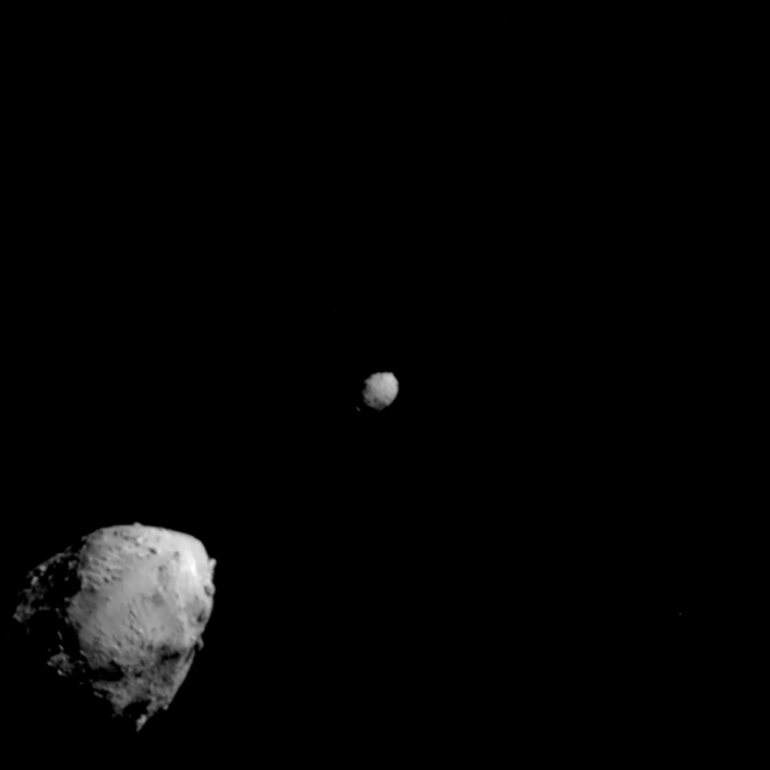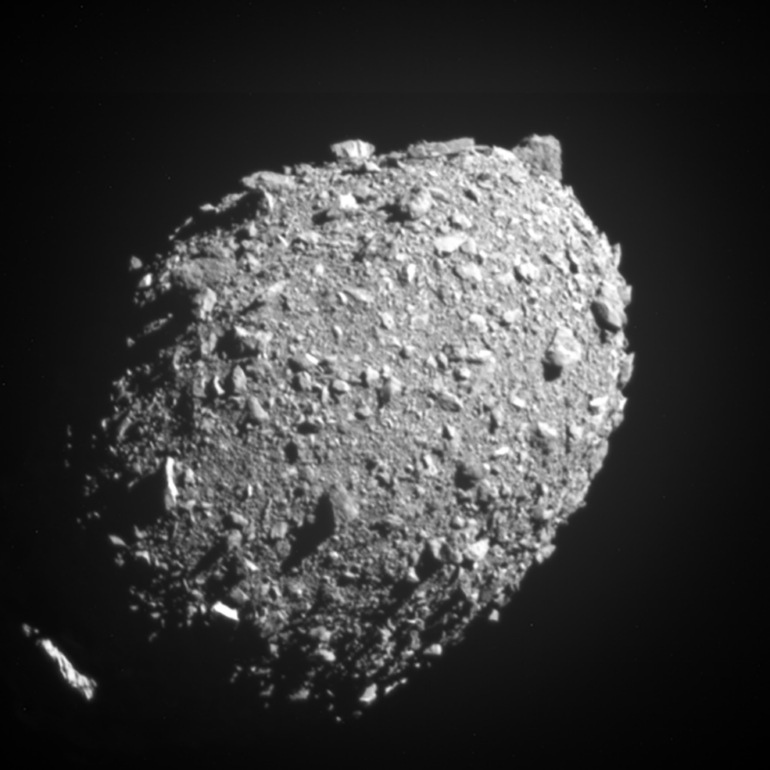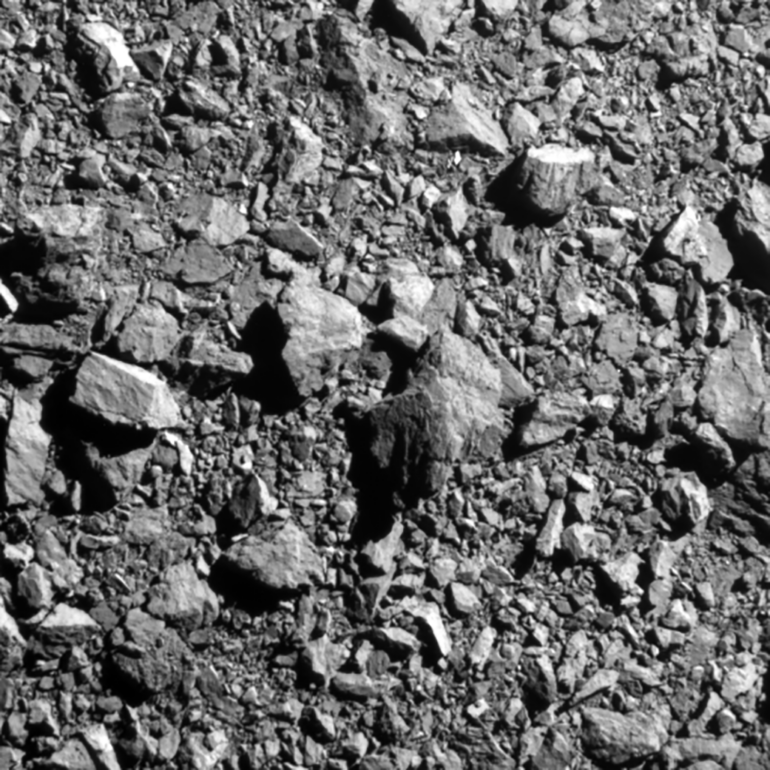
As expected, NASA released a video of the last five and a half minutes of DART’s 10-month journey before the planned impact with the asteroid Dimorphos during the first test of a planetary defense system in human history. On the video sped up by 10 times, you can see the approach of a 550-kilogram probe with a 160-meter astronomical object up to the last partial frame received a second before hitting the target.

The DART probe rammed Dimorphos on September 27 at 2:14 am Kyiv time at a speed of 6.5 km per second – using the new SMART Nav autonomous optical real-time navigation system, the probe independently hit almost the very center of the astronomical object (according to preliminary estimates, it deviated only 17 meters from the center of the asteroid). As it approached the target, DART continuously filmed the process with the DRACO camera and corrected the trajectory based on these images. Below is a video of the last five and a half minutes, accelerated by 10 times – only the last six frames are shown at the original speed.
Video of the approach and collision of DART with the asteroid Dimorphos
Here’s another very revealing video of this historic event, taken with the ATLAS-Sutherland telescope in South Africa, showing dust ejected from the asteroid’s surface after impact with the probe.
Last night, Nicolas Erasmus (SAAO) and Amanda Sickafoose ( @planetarysci ) successfully observed DART’s impact with Dimorphos using the Mookodi instrument on the SAAO’s 1-m Lesedi telescope. @fallingstarIfA also did a very similar measurement using ATLAS-Sutherland. #DART #NASA pic.twitter.com/olr4gV5SOV
— SAAO (@SAAO) September 27, 2022
Separately, NASA cites four frames that are likely to go down in history – they could be seen in yesterday’s material, but we will duplicate it.




NASA also released the first footage received by the LICIACube satellite minutes after NASA’s Double Asteroid Redirection Test (DART) mission collided with the target asteroid Dimorphos:
It is expected that as a result of the DART impact, a crater with a diameter of about 20 meters was formed on the asteroid, and the orbital period of Dimorphos around the larger asteroid Didymos will change from several tens of seconds to several minutes. This should be confirmed (or refuted) by further studies – this outstanding event was observed by several ground and space telescopes, in particular Hubble and James Webb. Observations will last about six months, but the first results will be known in the coming weeks. On September 30, photos of the man-made crater formed as a result of the impact are expected – they should be taken by the separated LICIACube cubesat from the probe on September 11, from a height of about 55 km. In 2027, the European Hera station and its two cubesat satellites APEX (Asteroid Prospection Explorer) and Juventas will get to Dimorphos, and the latter should land on the object at the end of its mission. The devices will study the physical properties of the binary system and should confirm the change in the orbit of Dimorphos.
As noted more than once, this is the first of its kind test of the “kinetic impactor” method to protect the Earth from potentially dangerous asteroids. If it works, then in the future, when it is needed, humanity can thus deflect a potentially dangerous asteroid and avoid a cataclysm. Otherwise, we risk repeating the fate of the dinosaurs. In theory, there are other methods to deflect an astronomical object, including the elegant gravity tractor and crude detonation, as in the iconic “Armageddon”.
Updated: NASA DART probe rammed asteroid Dimorphos – this is the first such attempt by mankind to deflect an astronomical object






